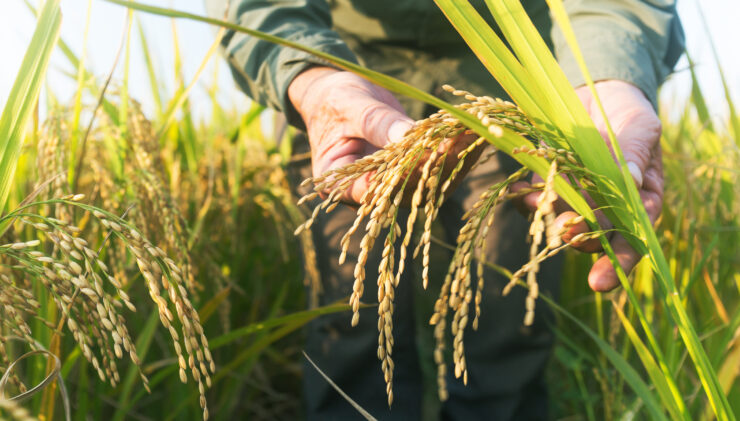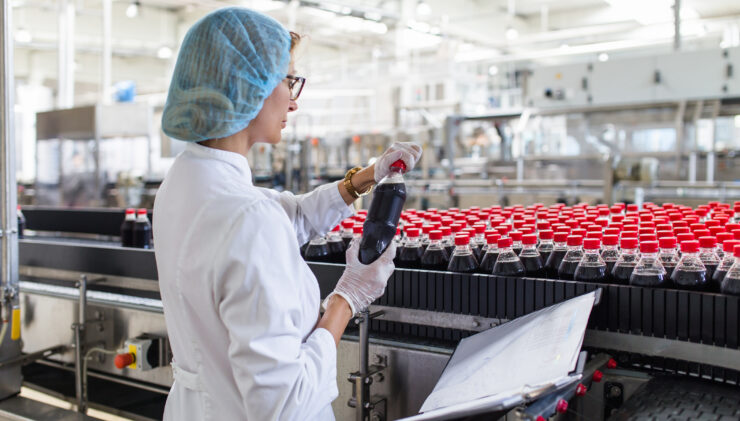 Why Crop Insurance Is More Important Than Ever
Why Crop Insurance Is More Important Than EverCrop insurance has always provided vital protection for farmers, since extreme weather, disease, and pests may cause poor crop yields. Farmers can’t always prevent these losses, but they can protect themselves from the financial devastation that may follow. With risks to crops increasing, crop insurance is playing an increasingly important role in protecting farmers to ensure they continue producing food for the world.
Worsening Weather Puts Crops at Risk
At a small farm in Vermont, flood waters destroyed a harvest worth approximately $250,000, according to AP News. In Minnesota, farmers lost thousands of acres of crops to hailstorms, according to CBS News. In California, storms fueled by an atmospheric river inundated strawberry and lettuce crops just before harvest, according to Fox Weather. In 2020, a derecho-fueled drought resulted in losses of $243 million for Iowa farmers, according to the Des Moines Register.
Headlines of farmers losing acres crops to drought, hail, fire, and floods are all too common. Unfortunately, climate change means the problem may become worse. The American Farm Bureau Federation says weather disasters caused more than $21 billion in crop losses in 2022, when 18 weather and climate disasters caused losses of at least $1 billion each. In 2023, there were 28 billion-dollar weather and climate disasters, according to NOAA. That’s a new record. It would have been unimaginable in the 1990s, when (adjusted for inflation) there was an average of only 5.7 billion-dollar disasters each year.
As weather and climate disasters increase in severity and frequency, crops become increasingly vulnerable. Crop insurance provides critical protection.
Pests and Diseases Are Another Growing Threat
The USDA says 20% to 40% of global crop production is lost to pests each year, whereas plant diseases result in economic losses of $220 billion annually. Invasive insects alone lead to losses of around $70 billion. Once again, the risks may be increasing.
A major issue is climate change. Bloomberg warns that higher temperatures allow insects and diseases to spread into new regions. Research published in Nature found that climate warming allows pests to increase their overwintering range, which also increases pesticide resistance.
The Food Supply Chain Is Already Under Strain
It’s always bad news when crops are destroyed. Right now, though, the loss of crops may be particularly devastating due to rising food prices. According to Food & Wine, whole food prices increased by 22.4% between January 2020 and January 2024, whereas prices for processed foods increased by 22% and the prices for food eaten away from home (such as restaurant meals) increased by 25.6%.
These rising prices have put a strain on family budgets. Higher costs are also a problem for food manufacturers that rely on affordable food ingredients. When a crop fails unexpectedly, prices for that crop may surge due to reduced supply. Although crop insurance doesn’t prevent the crop failure, it does help farmers recover, enabling them to focus on their next crops. Without this protection, repeated crop failures may force farmers out of business.
Assessing Your Crop Insurance Coverage
In light of rising risks, this is a good time to assess your crop insurance coverage.
- Are you satisfied with your policy? According to the Insurance Information Institute, 90% of farmers who buy crop insurance select a multiple peril crop insurance (MPCI) policy. However, if the MPCI program does not meet your needs, private crop insurance is a good alternative.
- Is your coverage level sufficient? Disasters and pests don’t need to destroy 100% of a crop to cause financial hardship. Selecting an appropriate coverage level is key to ensuring your farm has adequate protection. When selecting the coverage level, food growers need to balance cost with the level of acceptable risk.
- Would you benefit from additional coverage? For an extra layer of protection, food growers can purchase supplemental and enhanced coverage in addition to their base crop insurance policies. Another option is to purchase a parametric insurance policy.
- Do you have protection for your property? Crop insurance will cover losses if a storm, wildfire, or other disaster destroys your crop. However, you’ll need separate insurance to cover property such as buildings and equipment.
Heffernan Insurance Brokers provides coverage that meets the needs of the food industry, including crop insurance. Our brokers will help you determine whether your coverage is adequate for your risks. Learn more.


